There was a secret organization that the Nazi's formed toward the end of the war, it was based on the paranormal, the Nazi's had this fascination with the occult, for example the organization Todt, their forced labor organization, a variation of that name means "death or dead". and since they worked many of their workers to death since they were conscript or slave labor, it kinda fits the name.
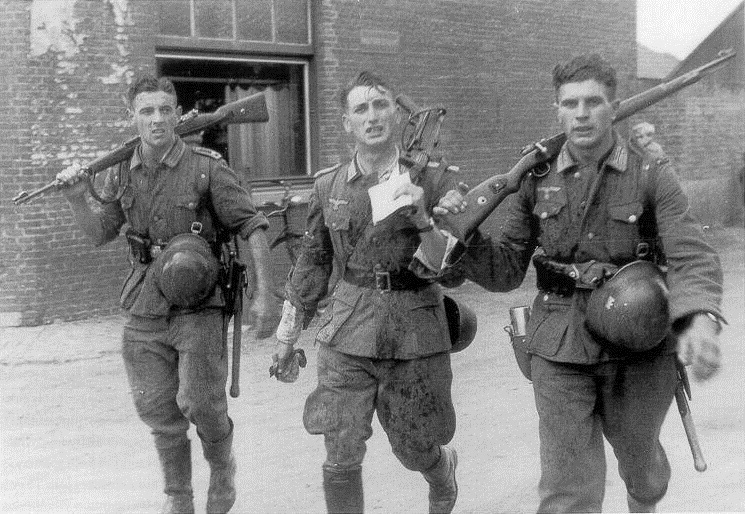
Even Adolf Hitler knew the Allies were advancing on Berlin. The thought both terrified and enraged him.
Hitler had always been a big believer in the occult, numerology, the zodiac, and more. But by the final months of the war, his belief morphed into a kind of obsession.
His preoccupation with these matters was well known to his men. They catered to it by delving into subjects like the existence of the Holy Grail, witchcraft, and werewolves.
Hitler was fascinated by werewolves, but he believed in them the same way Germanic folklorists did, namely that werewolves were merely “flawed, but well-meaning characters who may be bestial, but are tied to the woods, the blood, the soil,” says Eric Kurlander, author of Hitler’s Monsters: A Supernatural History of the Third Reich.
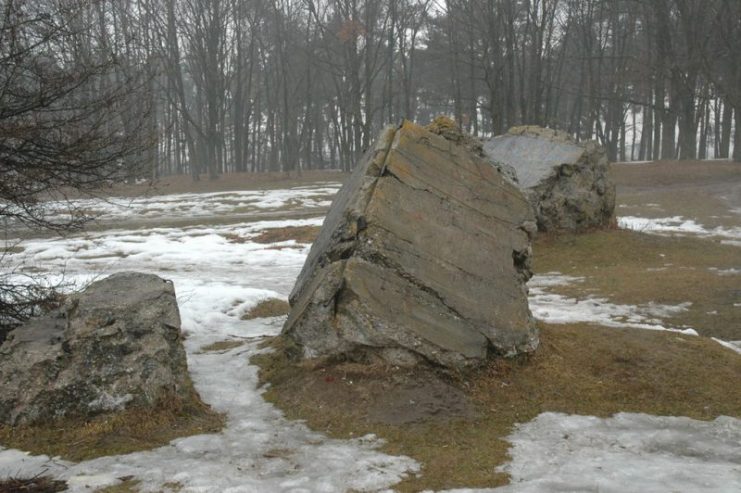 Werwolf – ruins of Hitler’s headquarter near VinnytsiaAccording to Kurland, Hitler used werewolves and wolves as symbols of
German strength and purity against those seeking to destroy them.
Werwolf – ruins of Hitler’s headquarter near VinnytsiaAccording to Kurland, Hitler used werewolves and wolves as symbols of
German strength and purity against those seeking to destroy them.Hitler co-opted the image of the creatures often. In one instance, he named a plan to destroy his enemy’s supply chain “Operation Werewolf.”
He also created a group of paramilitary soldiers – werewolves – to confuse and frighten the advancing Allies and the Soviets, against whom he was losing badly on the Eastern Front.
By late 1944, even Hitler and his top men, including Joseph Goebbels, knew the war would soon be over. They realized that they couldn’t pull victory from the jaws of defeat.
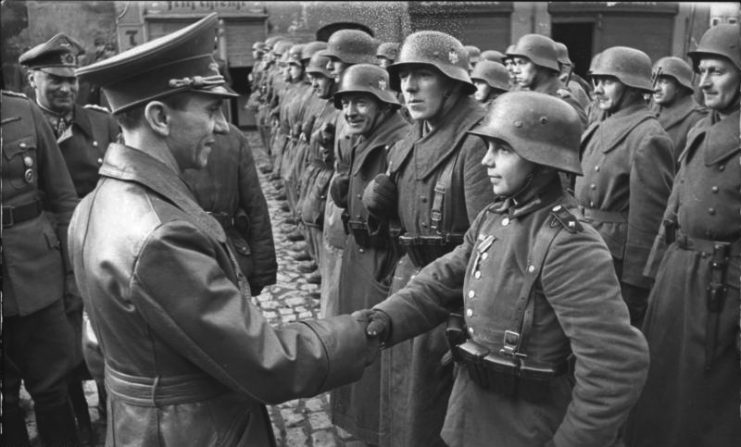 9 March 1945: Goebbels awards a 16-year-old Hitler Youth, Willi Hübner, the Iron Cross for the defense of LaubanInstead, they chose to delay the inevitable in the hope that they
could devise a more favorable scenario for Germany. Historian Perry
Biddiscombe explains in his book, Werewolf! The History of the National Socialist Guerrilla Movement, 1944-1946 that Goebbels came up with the idea to exploit the werewolf legend.
9 March 1945: Goebbels awards a 16-year-old Hitler Youth, Willi Hübner, the Iron Cross for the defense of LaubanInstead, they chose to delay the inevitable in the hope that they
could devise a more favorable scenario for Germany. Historian Perry
Biddiscombe explains in his book, Werewolf! The History of the National Socialist Guerrilla Movement, 1944-1946 that Goebbels came up with the idea to exploit the werewolf legend.In early 1945, Biddiscombe notes, broadcasts began nationwide urging citizens to join the “werewolf movement.” He describes one broadcast in which a woman, posing as a werewolf, says, “Lily the werewolf is my name. I bite, I eat, I am not tame. My werewolf teeth bite the enemy.”
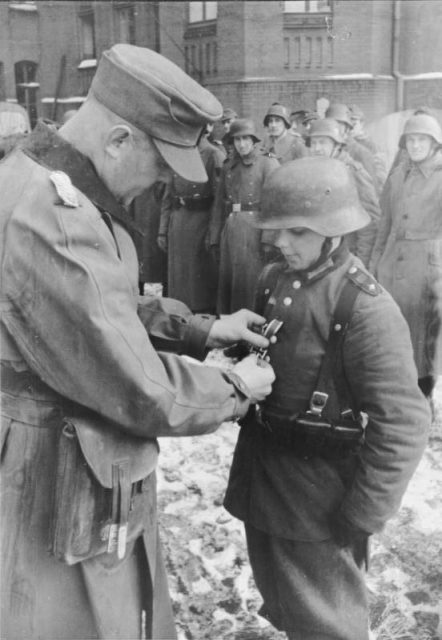
16-year-old Willi Hübner being awarded the Iron Cross in March 1945.Photo: Bundesarchiv,
It might sound a little absurd now, but some Germans back then were eager to join up because the propaganda stoked fears they already had about the victors.
However, many Germans were largely tired of the war, worn out by years of deprivation and conflict. They just wanted the whole thing to be over.
The Allies took the threat seriously as well, even though General Patton declared it “bunk.”
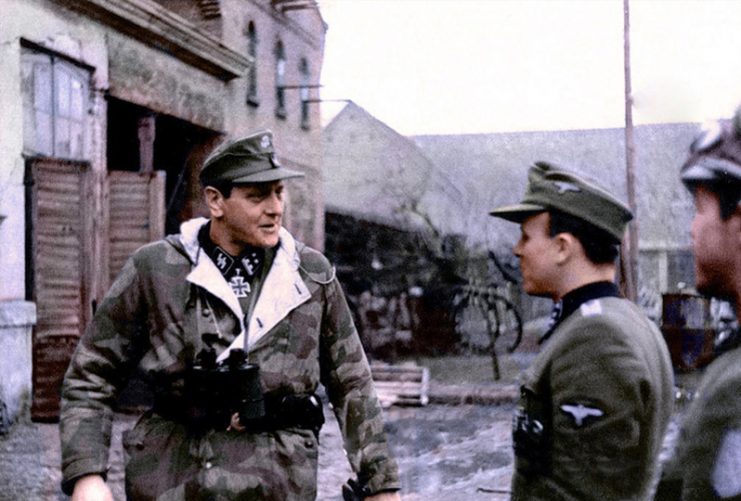
Biddiscombe estimates that several thousand injuries resulted from the werewolf campaigns. They targeted folks who welcomed the Allies and did substantial damage until 1947.
Kurlander finds this period in Germany’s history particularly intriguing. “It’s fascinating to me,” he told Smithsonian.com, “that even when everything is coming down around them, the Nazis resort to a supernatural, mythological trope in order to define their last-ditch efforts.”
Germany at the end of World War II was a chaotic place largely destroyed by Allied bombs. Its people were exhausted from years of Nazi rule and a war that left them hungry and poor.
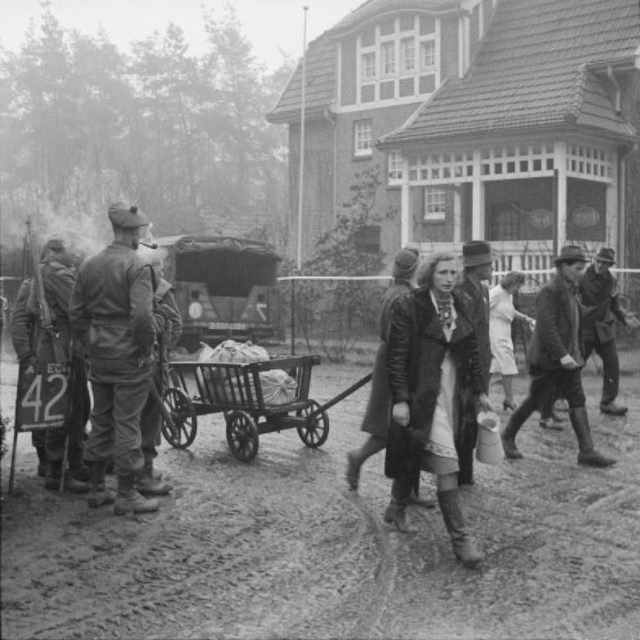
If the Allied soldiers were never actually as hurt by the werewolves as he had hoped, his own people suffered because of them. It is another chapter in the long saga of Nazi rule, and the damage it caused to the German people.



Good dive into history. Thanks!
ReplyDeleteThe first photo of the three German guys reminded me of my childhood as a first generation son of a Reichsmarine sailor who got captured by the British.
ReplyDeleteMy dad's best friends here in western Canada were mostly veterans of the British Army and Navy, the Belgian and French armies and resistances, the USAF and the Canadian army. The whole lot of them used to drink and play cards together at the German Canadian Club and various Royal Canadian Legions.
Those men did not hate each other, they hated politicians. Very wise.